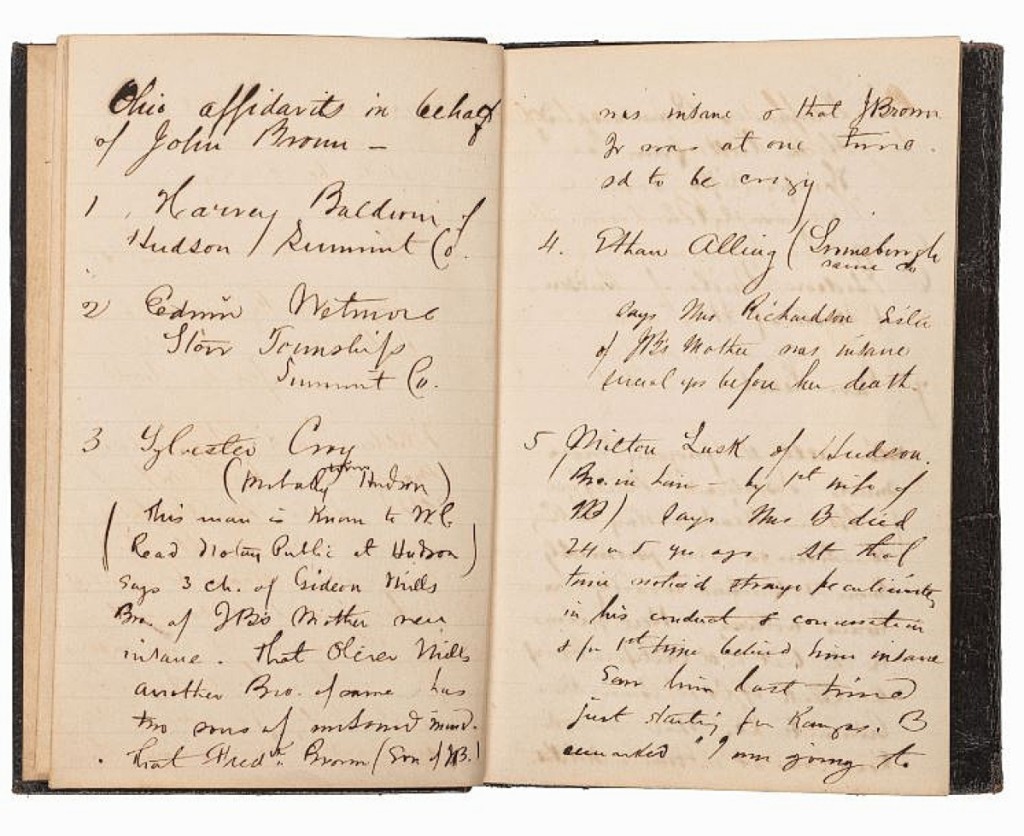CINCINNATI, OHIO – An archive of materials related to the work of attorney George H. Hoyt as he represented abolitionist John Brown in his famed 1859 trial attained $43,750 at Cowan’s first dedicated various owner African Americana auction on February 18. The trial saw Brown prosecuted by the Commonwealth of Virginia for treason, as well as murder and inciting a slave rebellion, for his raid of the United States federal arsenal at Harper’s Ferry.
Brown, along with 17 other white and five Black men, planned to use the arsenal to lead a slave insurrection across the South. It ended in a standoff with federal troops that saw ten of the men shot or killed, five captured and five others escaped.
Hoyt, also an abolitionist, appeared at Brown’s defense pro bono on the third day of his trial. He gathered testimonial materials for an insanity defense, to which Brown categorically opposed, which forced Hoyt to unsuccessfully mount a different approach. Brown was convicted and hanged.
Cowan’s billed the material as “a rare and remarkable archive that sheds light on the historic John Brown trial, George H. Hoyt’s participation in the Civil War, and the abolitionist movement.”
The materials included a leather-bound journal with 28 pages written in Hoyt’s hand, 21 of them containing affidavit testimonies from Brown’s former neighbors and relatives residing in and around Akron, Ohio. Many of them were made to corroborate an insanity defense. It is unknown whether the testimonies were used during the trial or at an appeal.
The auction house wrote, “In his journal, Hoyt recorded the following encounter between Brown and his former brother-in-law, Milton Lusk of Hudson, OH: ‘Mrs B died 24 or 5 yrs ago. At that time noticed stranger peculiarities in his [Brown’s] conduct of conversation & for 1st time believed him insane. Saw him last time just starting for Kansas. B remarked ‘I am going to Kansas & I am armed to the teeth from a Sharp’s rifle down to a gimlet.'”
Other pieces of the archive included letters from Hoyt to various people during his time serving in the Civil War as well as a scrapbook of newspaper coverage of the trial.
Watch for a full review in a future issue.





